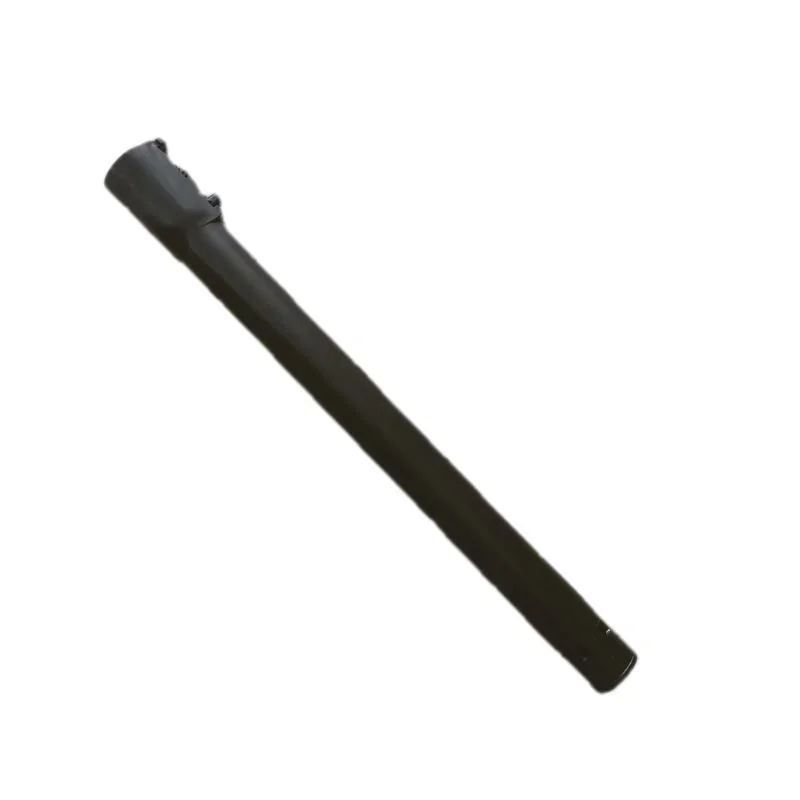As the demand for efficient and durable vacuum cleaners continues to increase, it is critical to understand the intricacies of the plastic injection mold production process. In this blog post, Xuzhong will share with you the various stages involved in making high-quality vacuum cleaner plastic injection molds. From design and prototyping to mold production and quality control, empowering you to make informed decisions when manufacturing these indispensable cleaning equipment.
Production Process of Customizable Vacuum Cleaner Plastic Injection Molds
1. Designing the Vacuum Cleaner Plastic Injection Mold
The first step in the vacuum cleaner plastic injection mold production process is designing the mold itself. This stage involves creating a 3D model of the mold, considering factors such as the vacuum cleaner's shape, size, and functionality. Designers utilize computer-aided design (CAD) software to develop precise and detailed mold designs. The design must account for factors like material flow, cooling channels, and ejection mechanisms. Collaboration between designers, engineers, and manufacturers is crucial to ensure the mold's functionality and compatibility with the injection molding process.
2. Prototyping and Testing
Once the mold design is finalized, prototyping and testing are essential to validate its functionality. Prototypes are created using various techniques, such as 3D printing or CNC machining, to produce a physical representation of the mold. These prototypes are then tested for fit, form, and function, allowing for any necessary adjustments or modifications to be made before proceeding to the production stage. Testing may involve simulating the injection molding process to identify potential issues and optimize the mold design for efficient production.
3. Mold Material Selection
Choosing the right material for the vacuum cleaner plastic injection mold is crucial for ensuring durability, longevity, and cost-effectiveness. Factors such as mold complexity, expected production volume, and the type of plastic used for the vacuum cleaner parts influence the material selection. Common mold materials include steel alloys, aluminum alloys, and various grades of stainless steel. Each material has its own advantages and considerations, such as heat resistance, corrosion resistance, and machinability. Careful consideration must be given to selecting a material that meets the specific requirements of the vacuum cleaner plastic injection mold.
4.Mold Production
5.With the mold design finalized and the material selected, the production of the vacuum cleaner plastic injection mold can begin. This stage involves the use of advanced machining techniques, such as CNC milling and electrical discharge machining (EDM), to shape the mold according to the design specifications. Skilled machinists and toolmakers meticulously craft the mold, ensuring precise dimensions and smooth surfaces. The production process may also involve heat treatment to enhance the mold's hardness and durability. Throughout the production stage, regular inspections and quality checks are conducted to maintain the mold's integrity and accuracy.

5. Injection Molding Process
Once the vacuum cleaner plastic injection mold is ready, it is time to proceed with the injection molding process. This stage involves injecting molten plastic into the mold cavity under high pressure. The plastic material, typically in the form of pellets or granules, is melted and forced into the mold using an injection molding machine. The mold's design determines the shape and features of the vacuum cleaner parts being produced. Factors such as injection speed, pressure, and temperature are carefully controlled to ensure optimal filling of the mold cavity and minimize defects.
6. Cooling and Ejection
After the plastic has been injected into the mold, it needs to cool and solidify before the mold can be opened and the part ejected. Cooling channels within the mold help dissipate heat and accelerate the solidification process. The cooling time is carefully calculated to strike a balance between efficiency and part quality. Once the plastic has solidified, the mold is opened, and the part is ejected using ejector pins or other mechanisms. Proper ejection is crucial to avoid damage to the part or the mold.
7. Quality Control and Inspection
Throughout the vacuum cleaner plastic injection mold production process, quality control and inspection play a vital role in ensuring the final product meets the required standards. Various techniques, such as dimensional measurement, visual inspection, and material testing, are employed to verify the mold's accuracy and the quality of the produced parts. Quality control measures help identify any defects or deviations from the specifications, allowing for corrective actions to be taken promptly. Regular maintenance and cleaning of the mold are also essential to ensure consistent production and prolong its lifespan.
8. Post-Production Processes
Once the vacuum cleaner plastic injection mold production process is complete, additional post-production processes may be required. These processes may include trimming excess plastic, surface finishing, and assembly of multiple parts. Trimming ensures that the final product meets the desired specifications and removes any unwanted flash or excess material. Surface finishing techniques, such as polishing or texturing, enhance the aesthetic appeal and functionality of the vacuum cleaner parts. If the vacuum cleaner requires multiple parts, assembly processes may be necessary to join them together, ensuring proper fit and functionality.
9. Conclusion
The vacuum cleaner plastic injection mold production process is a complex and intricate series of stages that require careful planning, design, and execution. From the initial mold design to the final quality control checks, each step plays a crucial role in ensuring the production of high-quality vacuum cleaner parts. By understanding the various stages involved, manufacturers can optimize their processes, improve efficiency, and deliver durable and efficient vacuum cleaners to meet the demands of consumers. With advancements in technology and materials, the vacuum cleaner plastic injection mold production process continues to evolve, enabling the creation of innovative designs and enhancing the performance of these essential household appliances.
Xuzhong
jy_dbls@xzkj-mould.com